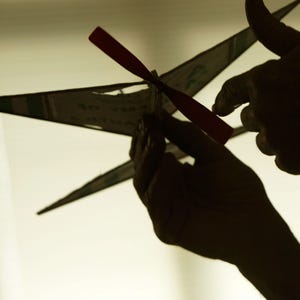Ground drones now
Bloodshed is inevitable if FAA doesn’t act fast.
Jim Hall
USA Today
The Federal Aviation Administration, which is required to protect hundreds of millions of passengers who fly the U.S. airways each year, continues to permit dangerous unmanned aircraft — drones — to threaten the safety of airliners every day. It needs to stop these flights until it reclaims its authority over our skies by regulating these vehicles that are untethered by federal law or, in some cases, common sense.
Early this month, two airliners approaching New York’s Kennedy Airport came within100 feet of disaster on the same afternoon when drones nearly hit them. Hundreds of passengers were placed at risk because the FAA allows these unregistered aircraft to fly in our busiest skies in close quarters with jumbo jets.
These were not isolated incidents. Last year, pilots reported 238 drone sightings near their aircraft. This year, we are on pace to surpass 1,000 with nearly 700 so far.
Just this Sunday, The Washington Post reports, the military scrambled fighter jets over Washington to respond to a drone reported in restricted airspace.
It is only a matter of sheer luck that one of these drones has not hit a windshield of an airliner traveling at more than 500 miles an hour, or gotten sucked into an engine. Jet engines have been known to fail when ingesting 8-pound birds. What would a 55-pound metal drone do?
Helicopters, which tend to fly at lower altitudes, face an even greater danger. Recently, a helicopter on an emergency medical flight in Fresno, Calif., had to swerve to avoid a drone just 20 feet away. A near-miss this time. Can we continue to expect such a benign result in the future?
There are more than a million consumer drones in the USA, with more coming on line every day. Yet the FAA has almost no control over where and when they fly. Last year, the FAA teamed up with industry and hobbyist groups to issue some common sense recommendations, such as not flying drones higher than 400 feet or within 5 miles of an airport, but as we’ve seen they have had little effect. There is a big difference between what is not recommended and what is actually illegal. While endangering an aircraft is already a federal crime, trying to shoe horn that rule onto unregulated drones is problematic.
Drones do not have to be registered and, of course, do not need identifying transponders. In June, two drones flying over a forest fire in California forced large aircraft carrying fire retardants to abort their missions, costing thousands of dollarsand delaying firefighting efforts. At last report, the operators of the drones had not been identified, even after local officials offered a bounty for the information. And what is the FAA’s response to such an incident? Officials still say they prefer public education campaigns.
The FAA did propose rules in February, rules that have been in the works for years. There is no word on when regulations will actually be put in place. Until drones are strictly regulated — including operating rules, registration requirements and penalties for interfering with other aircraft that have teeth — the FAA should ground any commercial unmanned aircraft operations. We’ve played Russian roulette with drones long enough.


